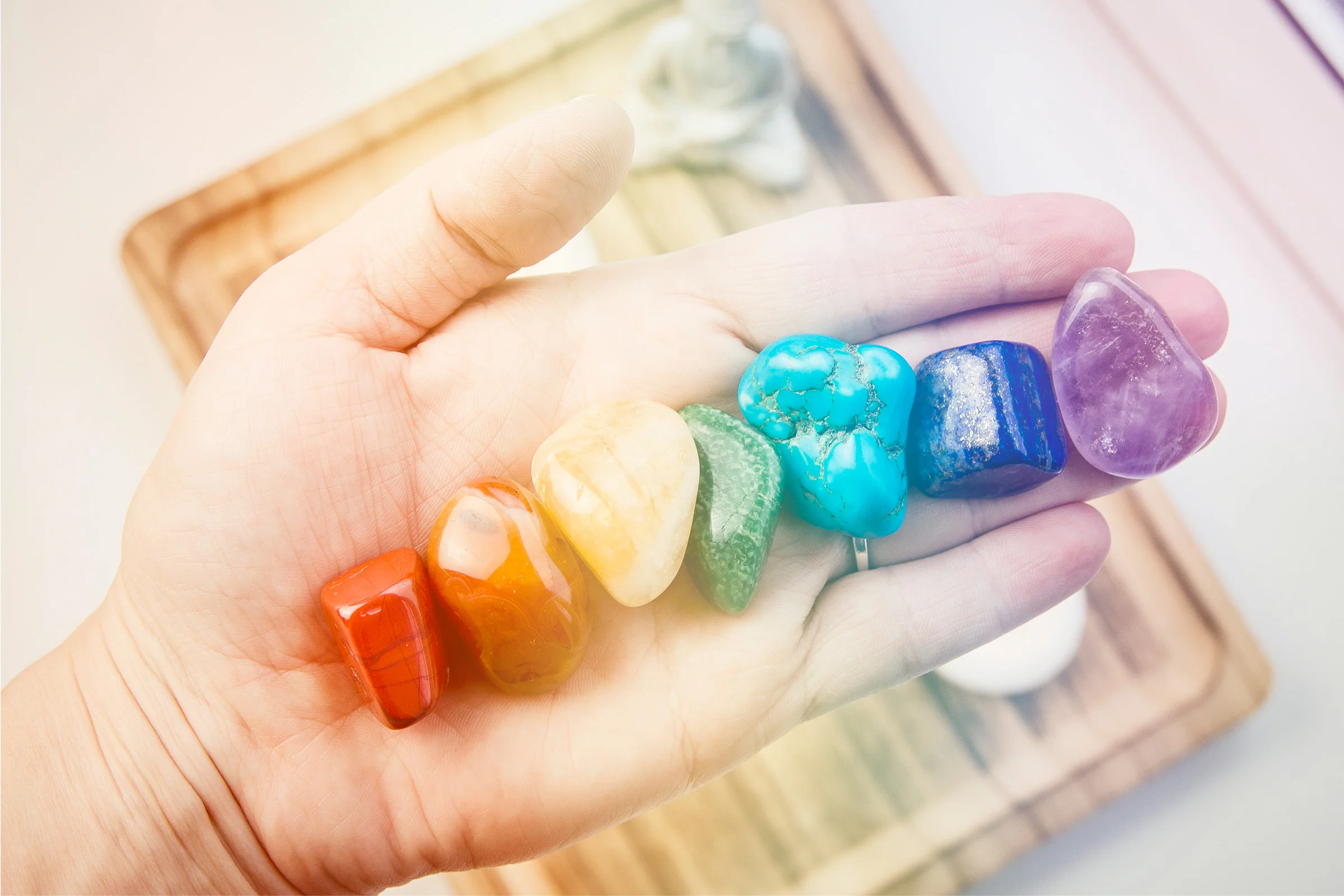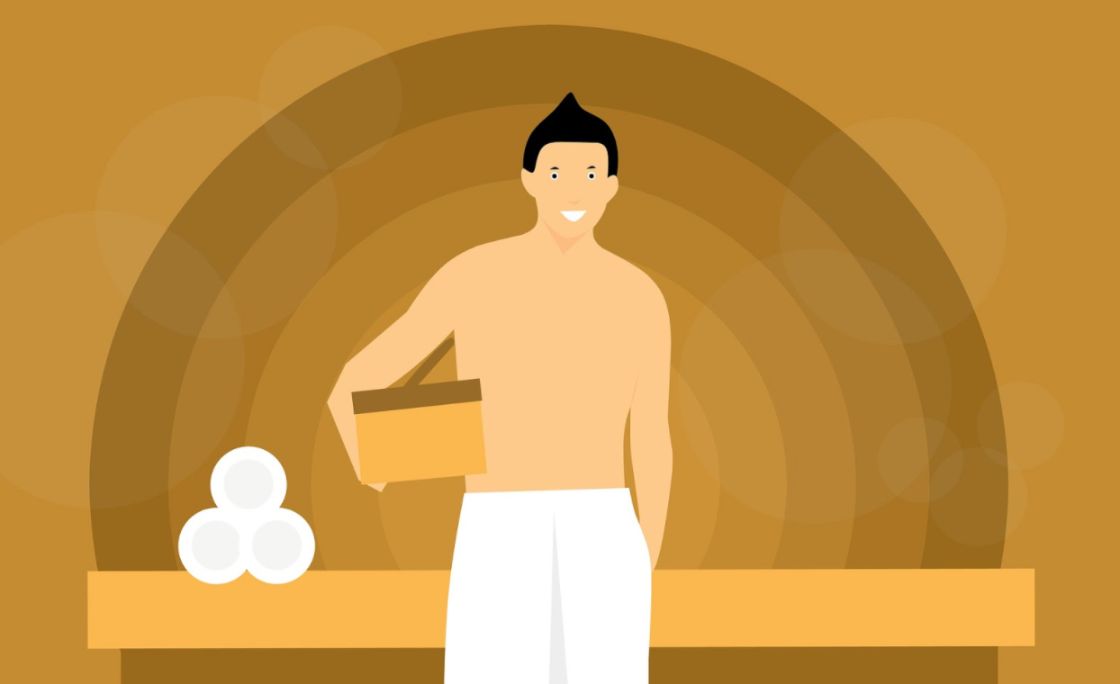20 Proven Natural Remedies for Stiff Joints
If your joints hurt, then you certainly should read what follows.
We will deal comprehensively with what causes joint pain and what you can do about managing the problem.
We will discuss natural remedies that can help ease your pain and stiffness without any of the toxic effects of drugs.
You can try these natural remedies to ease your pain.
However, if you have a serious problem, then you really need to be evaluated and treated by a doctor.
Later, we will discuss the symptoms that indicate you should see a doctor.
Why Do People Get Stiff Joints?
Many people get joint pain and stiffness as they age.
When you use your joints for many years, it takes a toll on them.
A lot of people get stiffness upon waking.
When you lie down overnight, the inactivity causes less lubricating fluid to be released into the joints.
This can make it more difficult to move your joints upon waking.
Stiffness in the joints might trouble you only for a brief period each day.
On the other hand, the stiffness might be a larger problem that impacts your mobility to a greater degree.
Sometimes pain and inflammation accompany the stiffness.
This can make using your joints very difficult.
Stiff joints are not always caused by aging.
Medical conditions such arthritis and lupus, as well as a person’s weight and diet, also can impact joint mobility.
Causes
Rheumatoid Arthritis
The most typical cause of joint pain is arthritis.
Rheumatoid arthritis is a condition that afflicts around 1.5 million Americans.
People usually are affected by this condition between the ages of 30 and 60.
RA is a chronic inflammatory condition.
It is also an autoimmune condition, which means the immune system attacks your body; scientists haven’t discovered the reason why.
In this case, it attacks the lining of your joints. This results in inflammation, soreness, and stiffness.
It also can result in joint deformity and bone erosion.
RA has no known cure. The only option is managing the symptoms through regular treatment.
As the condition progresses, not much can be done to prevent disability.
Osteoarthritis
Another type of arthritis is osteoarthritis, which affects over 30 million people in the U.S.
It generally occurs in people over the age of 65 and is caused by wear and tear on your joints.
The cartilage in your joints wears down with use; after a while, there is not sufficient cartilage to protect your bones.
OA most commonly affects the:
- knees
- hips
- fingers
- neck
- back
After a time, other symptoms may occur. These include:
- pain
- swelling
- decreased range of motion
- cracking sounds when the joint is in motion
As the condition progresses, you may find that your bones break more easily.
You might get bone spurs. After a time, you may lose cartilage completely.
This can cause real disability.
OA can be treated. In severe cases, joint replacement might be necessary.
Lupus
Lupus is also an autoimmune disease.
It causes the immune system to attack the body’s organs and tissues.
Lupus is hard to diagnose because its symptoms are similar to other conditions.
There is no cure for lupus, but treatments can reduce and control the symptoms.
Bursitis
The bursae are little sacs that cushion the different structures in your joints.
When those sacs become inflamed, you develop bursitis.
This results in stiffness and pain in the affected joint.
Bursitis happens most typically in the:
- elbow
- shoulder
- hip
Bursitis is often temporary, and it is treated by resting the affected joint for a while.
Gout
Gout is a form of arthritis.
It happens when crystals of uric acid form between the joints. Treatments are available.
Bone Cancer
Although it is rare, bone cancer can be the cause of pain and stiffness in the joints.
If your joints hurt, then it may be the result of bone cancer, which almost always causes increasing bone or joint pain.
How to Avoid Stiffness in the Joints
The best way to ease stiffness in the joints will depend upon the cause.
If your stiffness bothers you for more than half an hour after you awaken, or if your symptoms are getting worse, then you need to seek medical attention.
Hot or Cold Compress
Either extreme of temperature can be helpful for muscle and joint pain relief.
Apply a cold compress or bag of ice to the affected joint for 20 minutes many times throughout the day.
This will help reduce the inflammation or swelling and restore your movement.
It also will dull your pain receptors.
Heat is also beneficial for muscle and joint pain relief.
Try a heating pad or a hot water bottle to relax your muscles and increase your circulation.
Over-the-Counter Medications
Many mild instances of pain can be treated with OTC medicines.
Non-Steroidal Anti-Inflammatory Drugs are the most commonly used medication for this kind of pain.
These drugs are best known as aspirin, ibuprofen, and naproxen.
Steroids
Steroids are another method for treating joint stiffness and pain.
Corticosteroids can decrease inflammation.
Steroids may not be useful for people with advanced arthritis.
In certain cases, relief may only be temporary, and further injections might not be effective.
Exercise
Exercise and physical therapy can increase joint mobility and decrease stiffness.
If you don’t know how to begin an exercise regimen or are having movement problems, then you should discuss the matter with your doctor or a qualified physical therapist.
Exercise can be very beneficial, but you might aggravate some conditions if you don’t take the proper precautions.
Lose Weight
Carrying around excess weight can put you at greater risk for conditions that cause joint problems.
The extra weight will put greater stress on your joints, causing a lot of wear and tear.
You should use a combination of sensible exercise and diet to shed those pounds and give your body a break.
Home Remedies
Turmeric and Ginger Tea
Turmeric and ginger have anti-inflammatory properties that can ease the symptoms of both osteoarthritis and rheumatoid arthritis.
Turmeric has become particularly well-known recently.
It contains a compound called curcumin, which is a powerful antioxidant.
Also, it reduces two enzymes in the body that cause inflammation.
You can take turmeric and ginger via capsules, or you can enjoy them in a tea.
To make the tea, you will need:
- Two cups of water
- 1/2 teaspoon ground ginger
- 1/2 teaspoon ground turmeric
- Honey for sweetness (optional)
Instructions:
Boil the water and add the turmeric and ginger.
Reduce the heat and allow it to simmer for 15 minutes.
Strain the mixture and add enough honey to create a pleasing taste for you.
You should drink this tea twice a day. The recipe makes two servings.
Epsom Salt Soak
Epsom salt contains magnesium sulfate, a naturally occurring mineral that has been used for pain relief for a long time.
You can soak individual joints or add Epsom salt to your bathwater for a relaxing soak.
You will need:
- 1/2 cup of Epsom salt
- A large container
- Warm water
Instructions:
Fill the container with warm water and add the Epsom salt.
Stir it well so the grains dissolve, and place your painful joints in the solution.
If you have soreness in a place that is hard to soak in a container, then you should use Epsom salt in your bathwater.
You can do this by filling the tub with warm water and adding two cups of Epsom salt.
Try soaking in the mixture for at least 15 minutes.
Magnesium
Magnesium is a mineral that your body needs but does not produce for itself.
It is an important part of more than 300 different biochemical responses in the body.
It will relax your muscles and nerve endings to ease stiffness and soreness and is important for maintaining your heart rate.
According to one study, it also increases bone density when added to your diet.
Magnesium is available from several sources:
- Supplements: You can take magnesium in capsule form. They will function better when used in combination with a healthy diet.
- Diet: Even better than using supplements is getting magnesium naturally in your diet. Foods that are rich in magnesium include dark leafy greens, nuts, and legumes.
- Oil: Magnesium oil can be applied topically to the skin. You should apply it directly to the joints that are causing you pain.
Olive Oil
Olive oil is useful to lubricate your joints and ease the soreness of arthritis.
A substance in extra virgin olive oil called oleocanthal suppresses the inflammatory enzymes COX-1 and COX-2.
In this way, it functions similar to aspirin.
A study has indicated that a couple of tablespoons is equivalent to a dose of ibuprofen.
Not every olive oil is equally effective.
Heat destroys oleocanthal, so you need to use extra-virgin olive oil.
How ripe the olives are also affects the oleocanthal content.
The stronger the oil tastes, the higher the quantity of oleocanthal.
To apply it topically, you will need:
- a few tablespoons of extra virgin olive oil
Instructions:
Massage some of the oil onto painful joints twice daily.
You may also consume the oil.
If you consume it, you should account for it in your daily fat consumption so that you don’t add a lot of calories to your diet.
Dandelion Leaves
Dandelion leaves are rich in vitamins A and C, so they are useful for repairing damaged tissue and helping the liver remove toxins from the blood.
Studies have indicated that they have anti-inflammatory properties because they contain linoleic and linoleic acid.
Linoleic is an essential fatty acid needed by your body to make prostaglandin.
Prostaglandin regulates immune responses and controls inflammation.
Due to this connection to immunity, dandelion is rather useful in controlling rheumatoid arthritis specifically.
You may make a tasty salad out of the leaves or use them in tea.
To use the leaves in either a tea or a salad, you will need:
Tea
- three teaspoons of fresh dandelion leaves or one teaspoon dried leaves
- 1 cup of water
Salad
- Some fresh leaves
- a little olive oil
Instructions:
For fresh dandelion tea, soak the fresh leaves in hot water.
If you use dried leaves, put them in boiling water.
Dandelion tea is rather bitter.
You can add some sweetener to make it more palatable.
For a salad, just mix the leaves with your other favorite ingredients.
Molasses
Blackstrap molasses is rich in important minerals, such as calcium, potassium, and magnesium.
It has been a valued home remedy for arthritis for ages now.
Blackstrap molasses is the residue that remains after sugar is boiled three times.
It is not like refined sugar, which is bereft of nutrients.
As a dietary supplement, it can ease symptoms of arthritis due to its components that regulate nerve and muscle function.
It also will strengthen your bones.
To use it in a drink, you will need:
- 1 tablespoon of blackstrap molasses
- 1 cup of warm water
Instructions:
Warm the water, but don’t bring it to a boil.
Stir the molasses into the water until dissolved.
Drink the mixture once a day.
Please note that molasses will sometimes act as a laxative.
White Willow Tea
In ancient times, white willow bark was used for pain relief instead of aspirin.
Hippocrates, the famous Greek physician, actually wrote about it.
In the nineteenth century, it was discovered that white willow bark contains an active ingredient called salicin.
The body turns salicin into salicylic acid, which is similar to the active ingredient in aspirin.
However, white willow bark’s advantage is that the conversion takes place after it passes through the stomach.
Therefore, it is less likely to produce stomach irritation.
It comes in capsule form and also can be made into a tea.
To make the tea, you will need:
- 2 teaspoons of powdered white willow bark
- 1 cup of water
- honey and lemon
Instructions:
Bring the water to a boil, then reduce the heat to a simmer.
Mix the bark in and steep it for 15 minutes.
Remove from the heat and steep for 30 minutes more. Drink the tea twice a day.
You may need to flavor it with the honey and lemon to remove the bitterness.
Exercise
Although the last thing on your mind when you have pain is exercise, the truth is that it is very beneficial for reducing joint pain and stiffness.
Exercise also will help you get rid of extra weight, which strains your joints.
Exercise also will build up the muscles that support your joints, and it lubricates them too.
If you are sedentary, then less synovial fluid is made, and it is not being pressed out of the cartilage to provide lubrication.
However, once you become active, the increased blood flow aids synovial fluid production, which makes it easier for your joints to move.
To add exercise to your daily routine, try walking for at least 30 minutes.
You can start with 15 minutes of brisk walking.
Also, try doing joint-targeted exercises.
Specific stretches and exercises will focus on joints to strengthen them and help get rid of your pain.
Another way to encourage activity is to get a dog. When you have a dog, you have no choice but to get outside and exercise.
Peppermint and Eucalyptus Oil Blend
Peppermint and eucalyptus aren’t useful for healing arthritis, but they do have analgesic (pain-relieving) properties.
They give you a cooling sensation that will ease your discomfort for a while.
For the rub, you will need:
- 10 drops of peppermint oil
- 10 drops of eucalyptus oil
- 2 tablespoons of carrier oil (a mild oil used to dilute the others)
- a dark glass bottle
Instructions:
Mix the oils together. The carrier oil is necessary to dilute the other oils; they may irritate your skin without it.
You can use olive oil for this purpose.
Store the blend in the dark bottle away from sunlight.
Apply the mixture to your joints when they are sore.
Juniper Berry Tea
Research shows that juniper berries can ease arthritis pain.
This is due to a substance named terpinene-4-ol.
It suppresses blood cells called monocytes that respond to inflammation in the body.
In rheumatoid arthritis, the immune system will damage normal joint tissue without cause.
If you drink the tea every day, then the terpene might be able to reduce the inflammation.
Only two varieties are considered effective, the prickly juniper and the common juniper.
If you are pregnant, do not use this tea.
To make the tea, you will need:
- 1 tablespoon dried juniper berries
- 1 cup of water
- honey
Instructions:
Boil the water. Put the berries in a cup.
Pour the water over the berries and let them soak for 20 minutes.
Strain the tea. Drink the tea twice a day.
Golden Raisins and Gin
This is an old home remedy for arthritis. The flavor in gin comes from juniper berries.
As explained before, juniper berries work well against inflammation.
Golden raisins (they must be golden) are processed with sulfides.
For this remedy, you will need:
- 1/2 cup of gin
- 1 cup of raisins
- a dish
Instructions:
The amounts given above are only a general guideline.
The idea is simply that you need raisins and enough gin to cover them.
Place the raisins in a shallow dish and add enough gin to cover them.
Cover with a towel and put them away for two weeks. The gin will evaporate.
Eat about 10 raisins every day. It may take a while before you achieve the desired effect.
Boswellia Supplements
Boswellia, also known as frankincense, is a flowering plant that grows in Africa and Asia.
The resin derived from the plant is useful for its anti-inflammatory properties. It also works as an analgesic.
It also shrinks tissue that has become inflamed.
It usually is taken in tablet supplement form, and you can purchase it at your local health food store or online.
Pectin and Grape Juice
Pectin is a water-soluble carbohydrate contained in the cell walls of plants.
It is what makes a fruit firm when it gets ripe.
It has become well known as a home remedy for arthritis when combined with grape juice.
It is thought that it restores synovial tissue, which aids movement.
Many people have found relief with this mixture.
The reason you should use mix it with grape juice is that grape juice itself also is useful in reducing inflammation.
To make this mixture, you will need:
- 1 tablespoon of liquid pectin
- 8 ounces of grape juice
Instructions:
Mix the pectin with the grape juice. Drink the mixture twice a day.
It will probably take a week or two for the benefits to begin.
Cayenne Ointment
Capsaicin is a component of hot peppers that inhibits something called “substance P,” which helps the body transmit pain signals to the brain.
When substance P is inhibited, fewer pain signals are transmitted.
It is considered to be one of the better remedies for arthritis, but it should be used sparingly.
For this ointment, you will need:
- 3 tablespoons of cayenne powder
- 1 cup of carrier oil
- 1/2 cup of grated beeswax
- a double boiler
- a glass jar
Instructions:
Mix the cayenne powder with the oil and heat in a double boiler over medium heat.
Add the beeswax and stir until everything melts together.
Cool the mixture in the refrigerator for 10 minutes. Whisk the whole thing together.
Cool for another 15 minutes and then whisk it again. Put it in the glass jar.
Store it in the refrigerator. Apply daily as needed for pain.
Licorice
Licorice works a lot like the natural corticosteroids in your body that reduce inflammation.
It also reduces free radicals at the location of the inflammation and inhibits the creation of enzymes that contribute to inflammation.
Licorice does this by using a component called glycyrrhizin.
This substance is involved in the release of cortisol, which suppresses the immune system.
It will help with the pain and frequency of arthritis attacks.
Licorice comes in a variety of forms, including tea, tinctures and supplements.
Licorice is not something that everyone should use; avoid using it if you have blood pressure problems.
Flaxseed
Omega-3s are not only important for a strong immune system; they can also fight inflammation.
Flaxseed is one of the richest sources of omega-3 fatty acids.
If you use animal fats from non-pastured animals, it may result in even more inflammation.
You should try incorporating two tablespoons of the seed or its oil into your daily diet, but start with less (1-2 teaspoons) and work your way up.
Jumping right in could cause intestinal distress.
The seed can be added to your regular cooking.
Try it in a sauce or a stew.
Stinging Nettle
Don’t let the name put you off.
Nettles contain a plethora of healthy substances, such as protein, magnesium, calcium, iron, phosphorous, and beta-carotene.
They also have vitamins A, C, D and B complex in their naturally occurring forms, which makes them easy for your body to use.
Although the plant can cause you some pain if you touch it, it can actually reduce pain if properly applied to the body.
The way that it reduces pain is by decreasing inflammatory chemicals and interfering with the transmission of pain signals.
Nettles also contain helpful minerals that can reduce pain and build strong bones.
Stinging nettle is available in many forms including teas, capsules, tinctures and extracts.
The whole leaves can be used by applying them directly to the skin; the reaction to the sting is known world-wide for relieving arthritic swelling.
Ginger
Ginger extract diminishes the creation of chemicals such as leukotrienes that cause joint inflammation.
It also has salicylates. The body converts these into salicylic acid.
As said before, this is the same ingredient that is in aspirin.
A study has shown that patients taking ginger capsules reported significant relief from their knee pain.
Ginger is available in supplement form, but you actually could try increasing your dietary intake by drinking a tasty tea that can be made from ginger.
To make ginger tea, bring three cups of water to a boil.
Add a heaping tablespoon of a freshly grated ginger root. Simmer for 10 minutes.
Strain out the root. Sweeten to taste.
Borage Seed Oil
Borage is an herb that grows in the Mediterranean and is used in European cooking.
It has also been used for medicinal purposes.
Borage seed oil is the richest source of gamma-linolenic acid, which is an essential fatty acid that aids in maintaining joints and inhibiting inflammation.
A study has shown that GLA can significantly reduce the symptoms of rheumatoid arthritis.
Rosehips
Rosehips are rich in anthocyanins, which are flavonoids with anti-inflammatory properties.
Anthocyanins might also help to slow down the progress of arthritis by blocking certain types of enzymes that destroy cartilage.
Many different types of rosehip tablets and capsules are available.
You can also pick rosehips in late summer. They can be used in various items, such as rosehip jam.
To make rosehip tea, wash and trim your rosehips. Then, chop them up in a food processor.
Mix a tablespoon of this puree with three cups of boiling water.
Turn down the heat and simmer for 10 minutes. Strain the tea and sweeten to taste.
When to See Your Doctor
Any joint pain and stiffness that occurs suddenly should be evaluated by a doctor.
Also, if the joint stiffness and pain don’t subside after five to seven days, you need to seek medical attention.
You also need to see your doctor if you have any of the following symptoms:
- Severe pain
- Rapid swelling
- Joint deformity
- Inability to move a joint
- Intense redness or skin hot to the touch
Even though joint stiffness is not uncommon, particularly as you get older, it might indicate some other condition.
Your doctor can often determine its cause with a simple physical exam.
Even if your physical exam isn’t conclusive, your doctor might suggest some treatments to help you get rid of the stiffness.
If the condition doesn’t subside, you might need additional tests to get your diagnosis.
After your doctor has figured out the cause, he or she can put together an appropriate treatment plan for you.
This may include treatments that are not natural, such as steroids or NSAIDs.
Conclusion
Now you know about the causes of joint pain, what you can do to avoid joint pain and how to use the many home remedies to address stiffness and pain in your joints.
Before you try any serious joint pain medicine, such as steroids, it is wise to try some of these natural methods.
By and large, these are harmless ways to treat your problem without the nasty side effects that may accompany medication.
The most important takeaway should be that you need to take care of your body and keep yourself in good condition.
While you cannot prevent all causes of stiffness, you can certainly help prevent wear and tear on your joints by exercising appropriately and managing your weight carefully.









One comment
So many things to try. I have Osetoartitis and have had one knee replacement and the other one was just the cleaning out of the bad stuff around my knee. Now after a twisting fall and physical therapy I was doing fine but used a cane just in case I fell. But it seems that my hip did not like that as I have regular stiffness and pain in my left hip that leaves me in awful pain. Yes, I am overweight I am 5 ft. 4 in. and weigh 215 lbs. I am also 68 years old and have tried every diet under the sun to no avail. Is there any hope for me, I know if I felt better I could get moving more. I do ride my stationary bike every day for 3 miles. Which remedy should I try. I am up for anything. Thank you, Pat Schneider